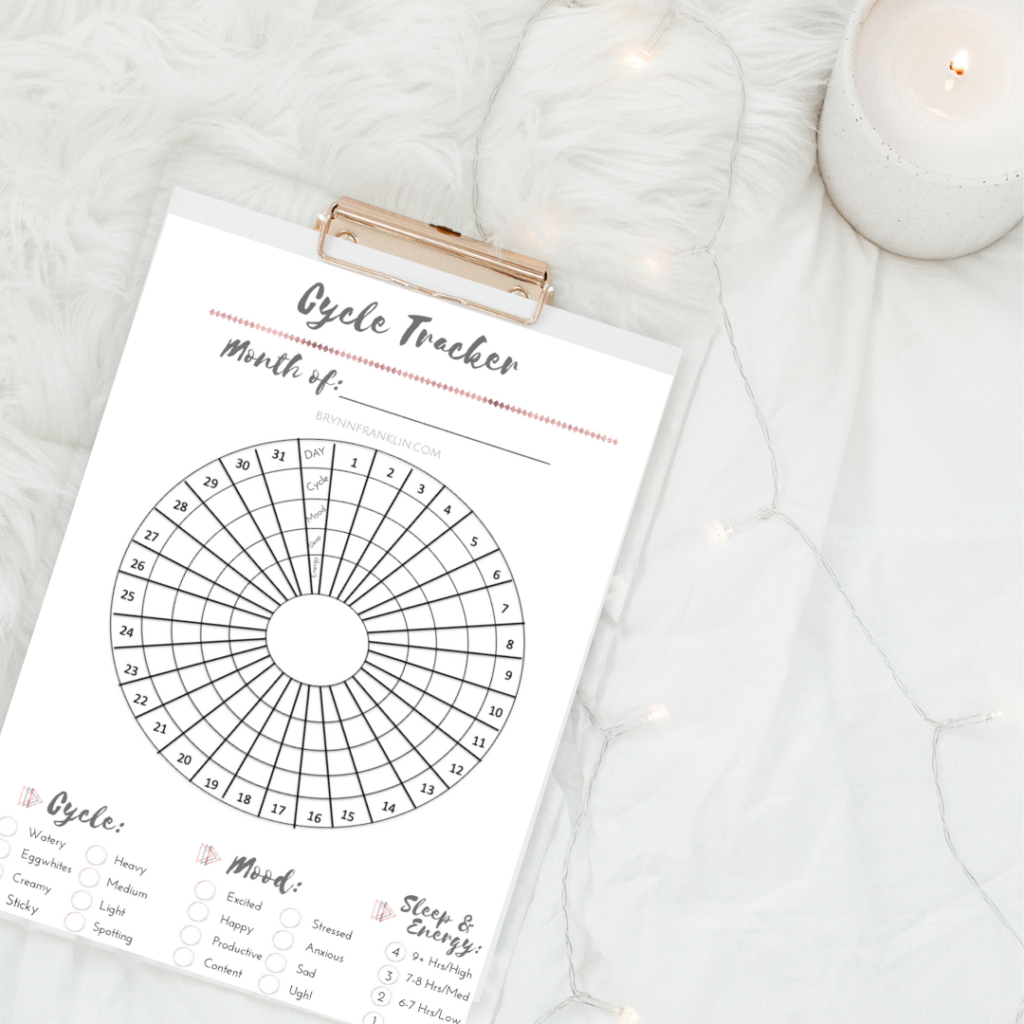Lunar Wellness: Part 1
We’re talking periods today and why understanding your cycle is so important. The average woman has 450 periods in her lifetime! That’s a lot of opportunities to listen and learn what your body has to tell you.
Your menstrual cycle has a large effect on your health and wellness. When you understand how it works and what your body is saying, you can live a healthy and harmonious life.
4 Phases
There are four phases in your menstrual cycle that take place over 23-35 days. These phases are: Menstruation, Follicular, Ovulation and Luteal.
(I’m going to get a little technical, so bear with me. It’s important to understand the basic biology that occurs throughout each phase. It helps give a little more insight into why you feel the way you do and can create a better roadmap later when we discuss wellness plans.)
Menstruation
Day 1 of your cycle is the first day of your period. The bleeding that occurs is caused by the active shedding of the uterine wall lining. This usually lasts 3-5 days (which sometimes feel like forever, especially when on vacation, right?).
Follicular Phase
During your period, your body is stimulating the ovaries to produce a new mature egg. This occurs in the follicles located in your ovaries. Each follicle contains one underdeveloped egg. (Fun Fact: before we are even born we already have all of our eggs stored in our ovaries).
The hormone estrogen is continuously rising as one “dominant” follicle grows and produces a mature egg. This rise in estrogen also creates thin, slippery mucus that is “sperm-friendly”. (I know talking about discharge sounds gross, but it’s a really important tool the body uses to speak to you- so start listening!)

Ovulation
This is the make-it or break-it moment in your cycle. The mature egg will break free of the follicle in the ovary and begin its journey down the Fallopian tube in search of its soulmate-Mr. Sperm.
This occurs around the 14-day mark, but it can vary cycle to cycle.
Some women who are incredibly in tune with their body can feel when they ovulate. You can also watch your basal body temperature. It will rise slightly when you ovulate.
Luteal Phase
Now we are nearing the end of your cycle. Now is when you may notice signs or symptoms of PMS (pre-menstual symptoms).
The follicle that produced the egg is shrinking and is producing another hormone called progesterone. This hormone is responsible for building up the lining in your uterus, in hope of a fertilized egg. But progesterone is also responsible for the bloating, sore boobies, feeling tired and irritable that is PMS.
If the egg isn’t fertilized, your estrogen and progesterone begin to decrease. This causes the uterine lining to break down and shed which means…. another period…
If you do pregnant, the fertilized egg will implant in the uterine wall and will produce a new hormone (hcg) which will keep the empty follicle active. This keeps the body from shedding the lining. The uterine lining is what provides nutrients to the fertilized egg until the placenta is created and mature enough to maintain the pregnancy.
Bio Lesson is Over, So Now What?
The biggest take-away from the above biology lesson is that hormones are amazing and they do some incredible things in our body. These same hormones also affect your moods, your energy levels and your sex drive!
When such an intricate cycle occurs in your body over 400 times in your life, shouldn’t you understand it and appreciate what happens?
The simplest way to begin to understand your cycle is by tracking it. There are two different ways you can do this: Digitally or Old-fashioned paper.
Digitally
There are numerous apps out there that can help you track your cycle. My personal favorite is Kindara. It is simple to use, works for becoming pregnant or preventing pregnancy, provides plenty of info and support, and the basic app is free.
Paper
The other option is charting with pen and paper. I’m a pen and paper gal. I like to use colors and be creative so using a paper chart makes me feel more connected to the reasons I’m tracking in the first place.
I created a tracking chart that also include other areas of wellness that can have an effect or are affected by your cycle. It’s yours for free because this is such an important part of your wellness journey.

Cycle Tracker
Track your menstrual cycle, mood, sleep and energy levels.
It’s interesting and empowering when you start to see patterns during your cycle. There are so many things your body will tell you, if you’re willing to pay attention.
When do you sleep the best? The worst?
Does your energy fluctuate at the same times every month? How can you use these energy shifts to your advantage?
Do you feel more in touch and aware of your body? What else is it telling you?
Are you ready to listen?
Part 2
In part 2, we discuss nutrition and how it can help or hinder your cycle and how you feel throughout the month. Read it HERE.
